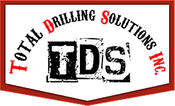- Home
- Drilling products
- Drill Fluid
Drill Fluid
Drill Fluid
The drill fluids must meet specific functions to facilitate drilling progress, minimizing hole stability and operational problems. It is the responsibility of the specialist to perform physical and chemical tests according with API standards to make the necessary adjustments to achieve the objectives.
The drilling fluid, or mud as it is commonly called, can be any substance or mixture of substances with appropriate physical and chemical characteristics. For example: air or gas, water, oil or combinations of water and oil with a particular percent of solids.
The fluid should not be toxic, corrosive, or flammable, but inert to contamination with soluble salts or minerals and stable at high temperatures. Also, you should keep your properties according to the requirements of operations and should be immune to bacterial growth. Drilling fluid design is a specialty of its own, so our experts can share with you all their background to help you select the right mud for your application.
We supply a wide range of fluids:
Air: pumping compressed air to the bore hole through tubing or annular space.
Air/water: compressed air added to the water to flush the borehole, providing a better cutting transport and cooling. Sometimes air/water mud could be used to decrease fluid weight to drill on mature fields or free a differential stuck pipe.
Air/polymer: compressed air is added to a polymer intended to create even better carriage properties.
Water: water with no more components could be used. Is usually used on superficial holes where aquifer contamination has to be avoided.
Water-based mud: is a basic compound of water and gel (usually Bentonite). Normally it is used to kick off drilling. During continuous drilling, formation solids are incorporated to the mud. Water based mud is a heterogeneous mixture of two immiscible liquids that require addition of an emulsifying agent and sufficient agitation to mix. This kind of mud can be classified as dispersed and non-dispersed according to its combination with cuttings and clay. Since this mud is mostly used on superficial phases and hydraulic fracking, its design must be well done, and only on TDS you’ll find the best technician able to make it.
Oil based mud: are those whose continuous phase, as filtrate, is pure oil. They may be inverse emulsion type or 100% oil. Inverse emulsion is a blend of water in oil, to which some salt concentration is added to achieve a balance of activity between fluid and formation. Water doesn’t get dissolved or mixed with oil, but remains suspended, each acting as a solid particle drop. In a good emulsion there shouldn’t be separation tendency and stability is achieved through emulsifier and other agents. 100% oil muds are prepared without water but a soft emulsifier is added to absorb water formation and emulsify the fluid. Emulsifiers or hard surfactants are used because these decrease formation permeability by emulsion blocking and alter its wettability. Oil based mud is the more expensive fluid system and its usage is conditioned by some environmental considerations, so go to TDS for correct mud design and obtain the best investment performance.
Synthetic based mud: are oil based mud which used synthetic oil to made an environmentally friendly fluid.
The Rig Circulating System works with high pressure, as it consists in a drilling mud circulation, which aims to lubricate, cool and transport cuttings generated by the bit during drilling. It is a vitally important system because without it the drilling rig would not be able to penetrate even 5 meters due to the high friction raising temperatures and melting the bit.
The typical circulating system on a rotary drilling rig is composed of:
Mud Pumps: duplex or tiplex according with plunger quantity, is the circulating system heart. Its main function is moving large mud volumes at low and high pressures.
Rotary Hose: is a reinforced, flexible and extremely hard rubber hose. Flexibility allows lowering and raising drill pipe during drilling operations while mud (extremely abrasive) is pumped through and down the pipe. Their ID are usually 7.62 mm or higher, to avoid big pressure losses.
Mud gas Separator: are control solid equipment’s first unit, which separates, vents and burns gas contained in the mud coming out from the well and may have been contaminated during drilling. It has no moving parts and the separation process is carried out by components to separated density difference.
Shale Shaker: separates the coarse fraction of cuttings, particles between 74 (200 x 200 mesh) and 600 micron (mesh 30 x 30). It consists of one or more separate meshes, which are mounted on a vibrating box, connected to an electric motor, which through pulleys or shafts, permeates the necessary vibration to remove solids from the fluid.
Basics concepts of Drilling Muds:
Drilling mud contains two components: one liquid and another solid. Liquid is continuous phase and solid, disperse phase.
Functions:
Transporting drilling cuttings from bore hole to surface
Suspending cuttings on annular space when circulation stops
Control formation pressure
Cooling and lubricating bit and drill string
Support hole walls
Drill string and casing buoyancy reducing its weight on block
Transmission of hydraulic power to the bit
Provide an adequate medium for logging


